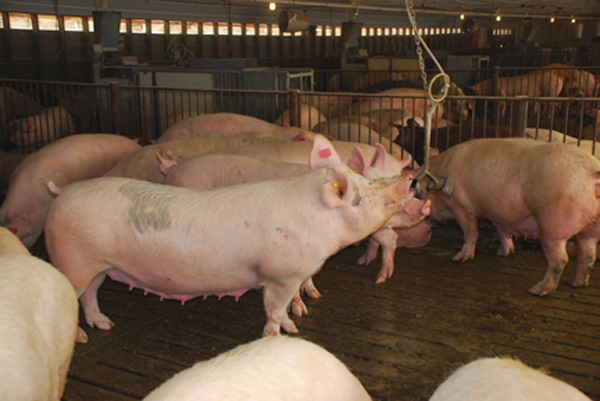January 3, 2012

Hog production returned to profitability in 2011, but producers remain cautious about the future. This is evidenced by the modest expansion of the breeding herd as reported by the U.S. Department of Agriculture (USDA) at the end of the year, according to a Purdue University Extension economist.
“Limited expansion would seem to be the prudent path until more is known about 2012 crop yields and feed prices. This suggests no expansion of the breeding herd until mid-summer 2012,” Chris Hurt says.
Pork production is expected to rise by 2 to 2.5% in 2012, but most of that increase is due to more pigs per litter rather than from larger farrowings. Exports are expected to remain strong so that the per capita pork availability in the United States will only increase by about 1%, he says.
“Pork demand will also be supported by smaller per capita supplies of beef and poultry in 2012. As a result, hog prices are expected to be down only modestly from 2011 levels with similar costs. This means another year of profitability is likely,” Hurt notes.
Hurt reports that the breeding herd was up only 0.4% in the December inventory report from USDA. Market hog numbers were up about 2% for hogs coming to market through next May. Winter farrowings, which represent next summer's hog supply, were up about 1%.
“With the number of pigs per litter increasing about 2%, slaughter numbers will be up near 3% next summer. Fall hog supplies will be drawn from the spring 2012 farrowings, where producer's intentions were down almost 1%. If this is so, it means fall 2012 hog slaughter would only be up 1%,” he says.
Demand should remain favorable for pork in 2012. The U.S. economy is expected to continue to show signs of recovery and some modest improvement. Exports are expected to continue at a record pace in 2012, representing 22% of production, he says.
“Exports are expected to be near records for beef and broilers as well, according to USDA forecasts. The amount of pork available per person in the United States is expected to rise only 1% in 2012. However, competitive meat supplies will be lower. Beef availability will be down about 6% with poultry supplies per person down about 3%,” he says.
Live hog prices averaged about $66 in 2011. Current forecasts are for 2012 prices to average about $65. Prices are expected to average in the very low $60s for the first quarter, and then move to the higher $60s for the second and third quarters before moderating to near $60 in the final quarter of 2012, he says.
Costs of production this year are expected to be similar to 2011 as well. The price of corn received by U.S. farmers averaged about $6.00 per bushel in 2011. Current futures are suggesting that the average will be about 20 cents higher in 2012. High-protein soybean meal at Decatur, IL, averaged about $335 per ton in 2011, and current futures markets expect that to be about $20 lower in 2012, Hurt says.
“Estimated profits above all costs in 2011 were around $15 per head and are expected to drop to about $10 per head in 2012. The strongest profits are expected in the second and third quarters with seasonally strong hog prices. Some profit is expected in the final quarter of 2012 due to lower corn prices if U.S. corn and soybean yields return to near normal,” he says.
In summary, Hurt says that pork producers have remained cautious about expansion. The uncertain U.S. and European economies are an important part of that caution. Also contributing to that caution is the memory of large losses experienced in 2008 and 2009. Probably the largest uncertainty is the price of feed.
“Inventories of corn and soybeans remain very tight. Normal 2012 yields around the world should provide somewhat higher inventories and bring down feed prices. However, any yield reductions in major growing areas this year could push feed costs up once again,” he says.
Given the hog and soybean meal price outlook for 2012, the breakeven corn price is about $6.75 to $7.00 per bushel. If corn prices stay at or below this area, hog producers could cover all costs or make a profit. If they move above this area, the 2012 profit potential could shift toward a loss, he says.
“These uncertainties suggest producers should continue to wait to expand until 2012 yields in the United States are better assured. This means expansion should not begin until mid-summer 2012,” he says.
You May Also Like



